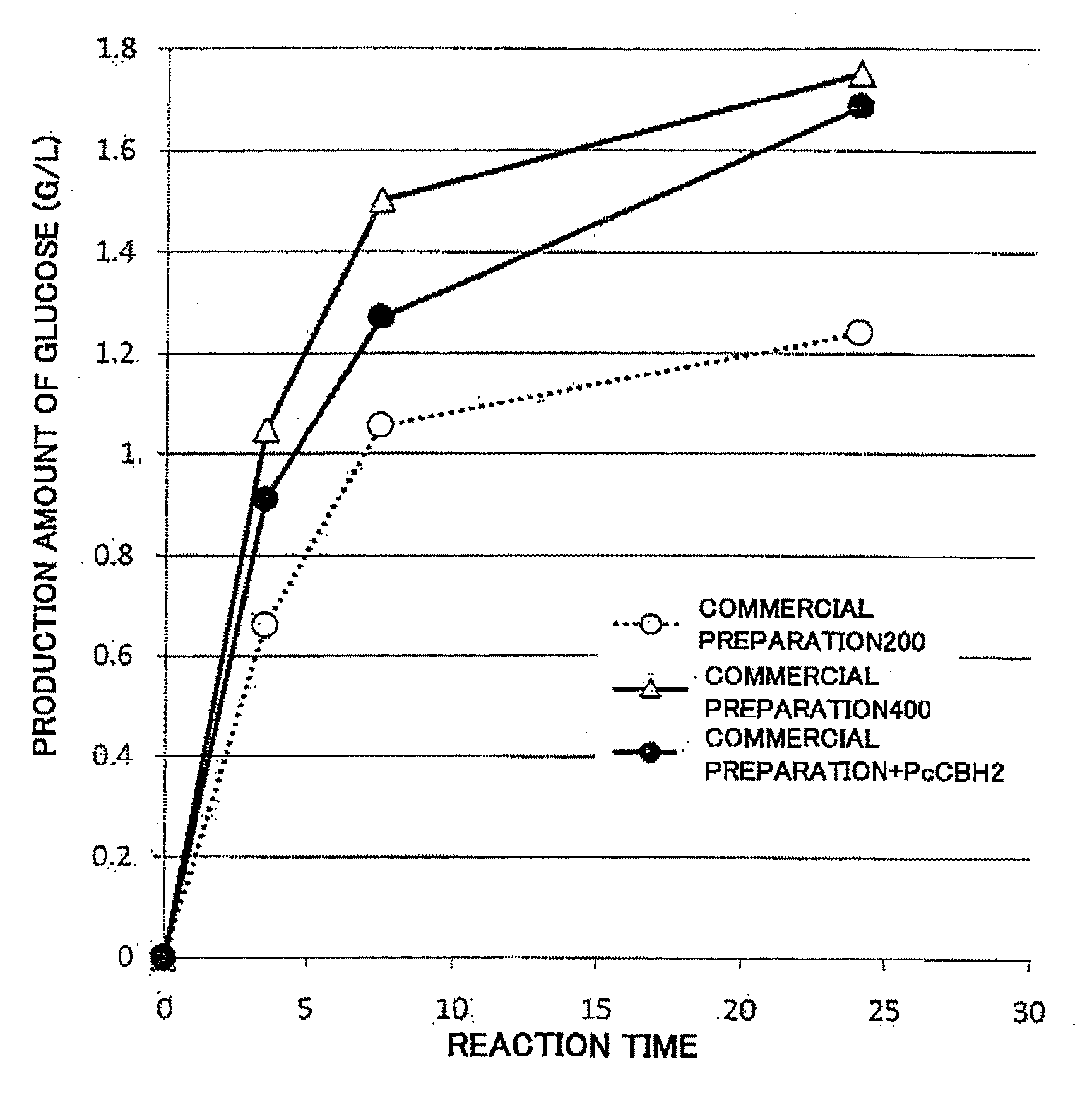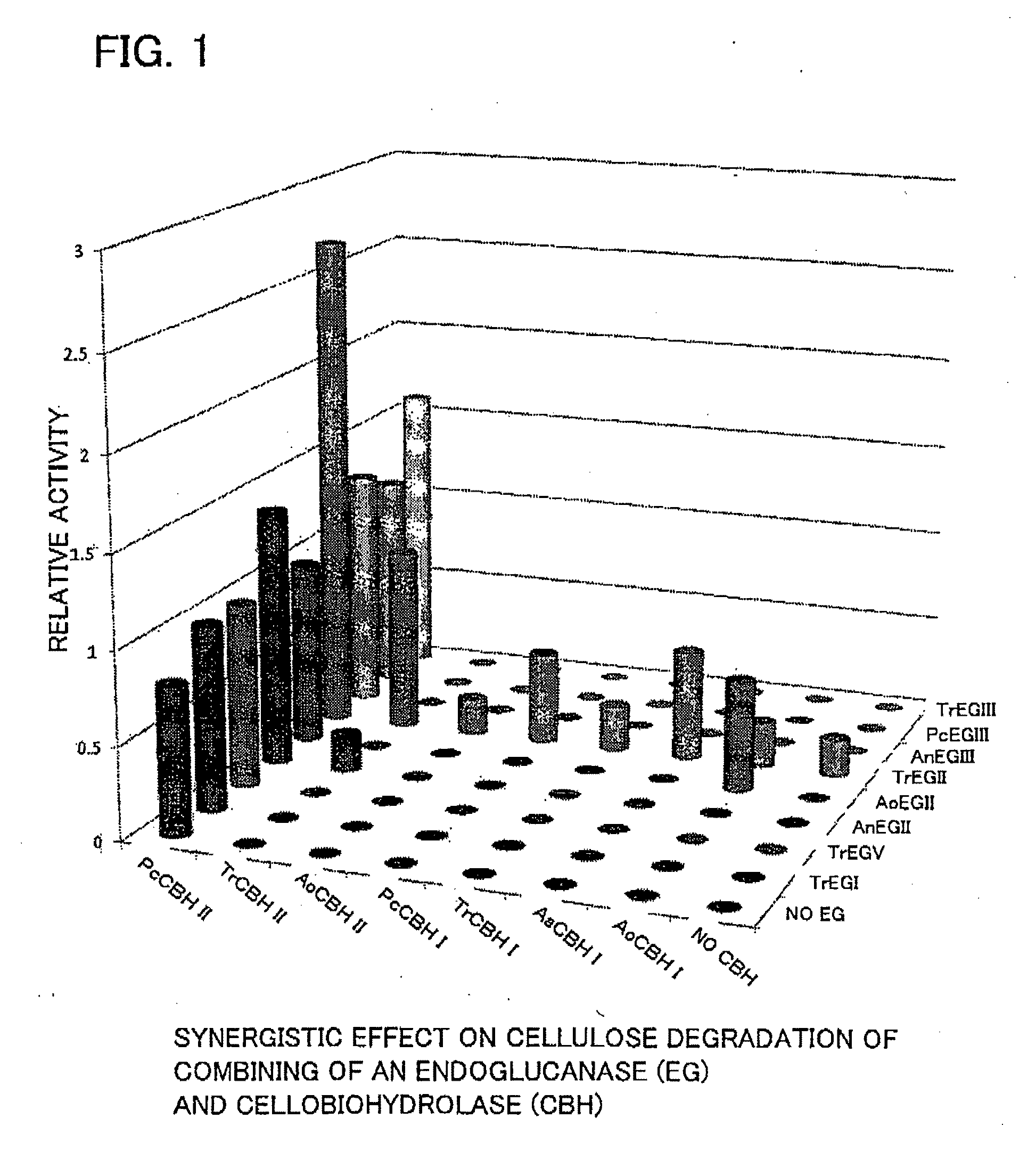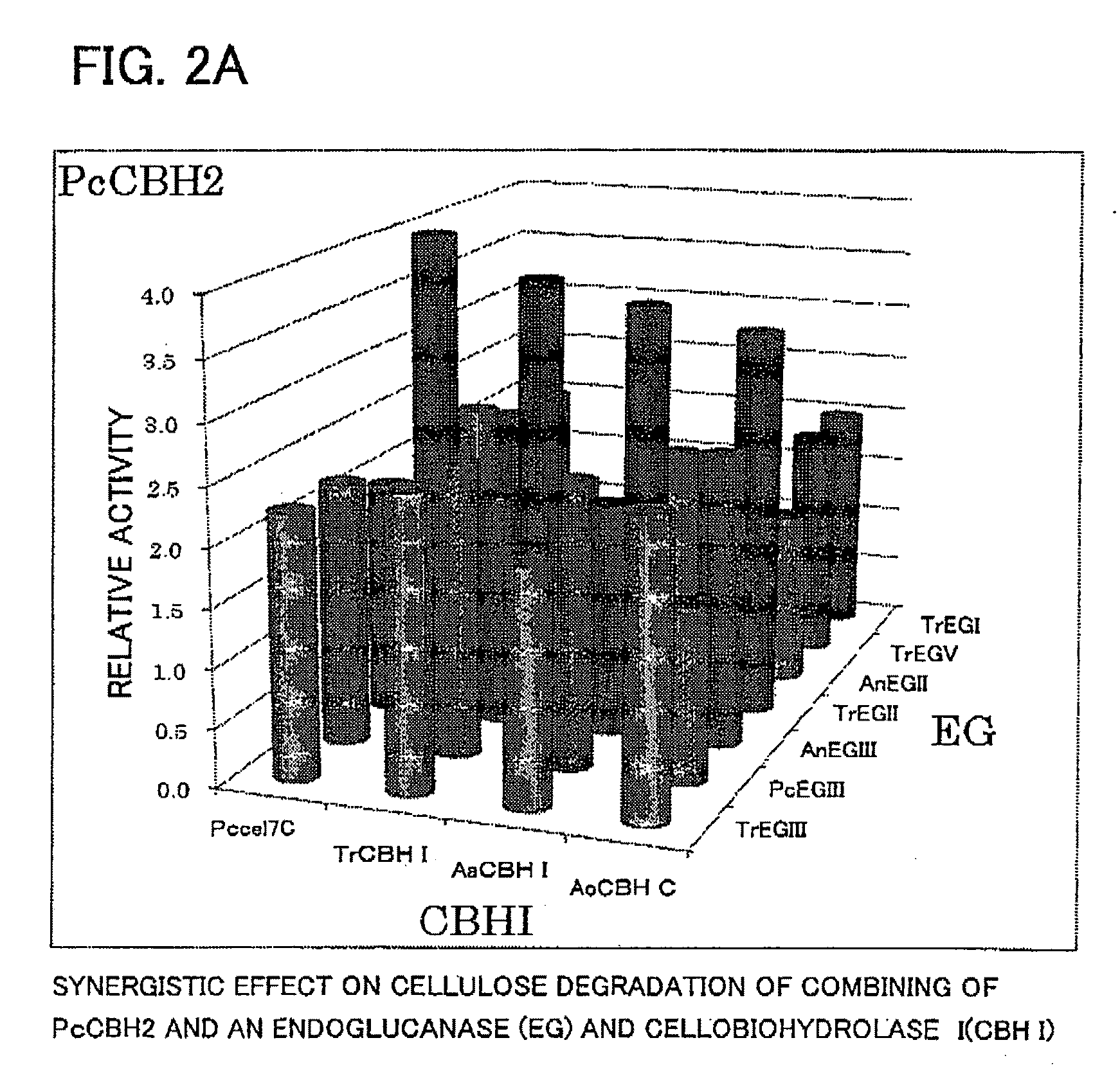Use of cellobiohydrolase from phanerochaete
- Summary
- Abstract
- Description
- Claims
- Application Information
AI Technical Summary
Benefits of technology
Problems solved by technology
Method used
Image
Examples
example 1
Production of Active Forms of Various Cellulases
[0109]The group of enzymes that cleave glycoside bonds (EC 3.2.1.-) are classified according to their Glycoside Hydrolase Family (hereinafter, GHF), and various cellulases are included therein. To test the synergistic effects of CBH and EQ enzymes belonging to as many GHFs as possible were evaluated in this example. The following have been reported: CBH (EC 3.2.1.91) classified into GHFs 5, 6, 7, 9, 10, and 48; EG (EC 3.2.1.4) classified into GHFs 5, 6, 7, 8, 9, 10, 12, 26, 44, 45, 48, 51, 61, and 74; and BGL (EC 3.2.21) classified into GHFs 1, 3, and 9. CBH belonging to GHFs 5, 6, 7, and 9 are known. Therefore, 13 types of CBH originating in 5 species of microorganisms (Trichoderma reesei, Phanerochaete chrysosporium, Aspergillus aculeatus, Aspergillus oryzae, and Clostridium thermocellum) belonging to those 4 GHFs were used. Twenty-four types of EG originating in 6 species of microorganisms (Trichoderma reesei, Phanerochaete chrysosp...
example 2
Evaluation of Synergistic Effect 1
[0113]In this example the degradation of insoluble cellulose by each type of cellulase synthesized by the cell-free synthesis system in Example 1 was evaluated based on the synergistic effect thereof. More specifically, 0.1% phosphoric acid swollen cellulose (hereinafter, PSC) was added to agar on a microtiter plate and solidified to make a plate containing polymeric insoluble cellulose. Next 1 μL each of the active form of BGL synthesized in Example 1 was added to all of the spots. Then 1 μL each of the active forms of CBH and EG synthesized in Example 1 was added both vertically and horizontally. Following a reaction at 40° C., staining was carried out by dripping a liquid stain (Congo red) onto the agar to cover the same, the cellulase reaction areas were decolorized, and the decolorization reaction was carried out until halos were formed (the greater the size of the decolorized white part, the higher the cellulose degradation activity). The size...
example 3
Evaluation of Synergistic Effect 2
[0115]CBHI belonging to GHF7 and CBHII belonging to GHF6 are known as forms of CBH, so it was believed preferable to add both CBHI and CBHII as the CBH added to BGL and EG. Therefore, the active form of BGL synthesized in Example 1 was prepared on the spots of plates containing polymeric insoluble cellulose prepared in the same manner as in Example 2, three types of plates spotted with 1 μL each of various combinations of CBHI and EG were prepared, and 1 μL each of a different CBHII was spotted onto each of the plates. After a reaction at 40° C., staining was carried out by dripping a liquid stain (Congo red) onto the plate to cover the same, the cellulase reaction areas were decolorized, and the decolorization reaction was carried out until halos were formed. The sizes of the formed halos were measured and expressed as relative activity. The results are shown in FIG. 2.
[0116]As shown in FIG. 2A to FIG. 2C, the cellulose degradation activity was mar...
PUM
| Property | Measurement | Unit |
|---|---|---|
| Fraction | aaaaa | aaaaa |
| Angle | aaaaa | aaaaa |
| Current | aaaaa | aaaaa |
Abstract
Description
Claims
Application Information
 Login to View More
Login to View More - R&D
- Intellectual Property
- Life Sciences
- Materials
- Tech Scout
- Unparalleled Data Quality
- Higher Quality Content
- 60% Fewer Hallucinations
Browse by: Latest US Patents, China's latest patents, Technical Efficacy Thesaurus, Application Domain, Technology Topic, Popular Technical Reports.
© 2025 PatSnap. All rights reserved.Legal|Privacy policy|Modern Slavery Act Transparency Statement|Sitemap|About US| Contact US: help@patsnap.com



